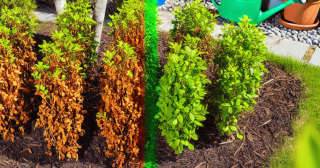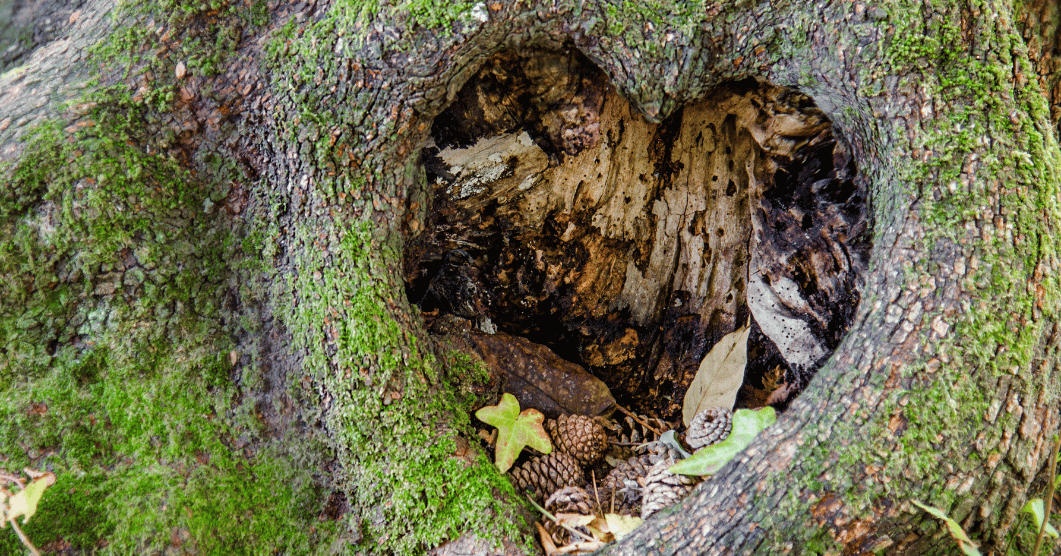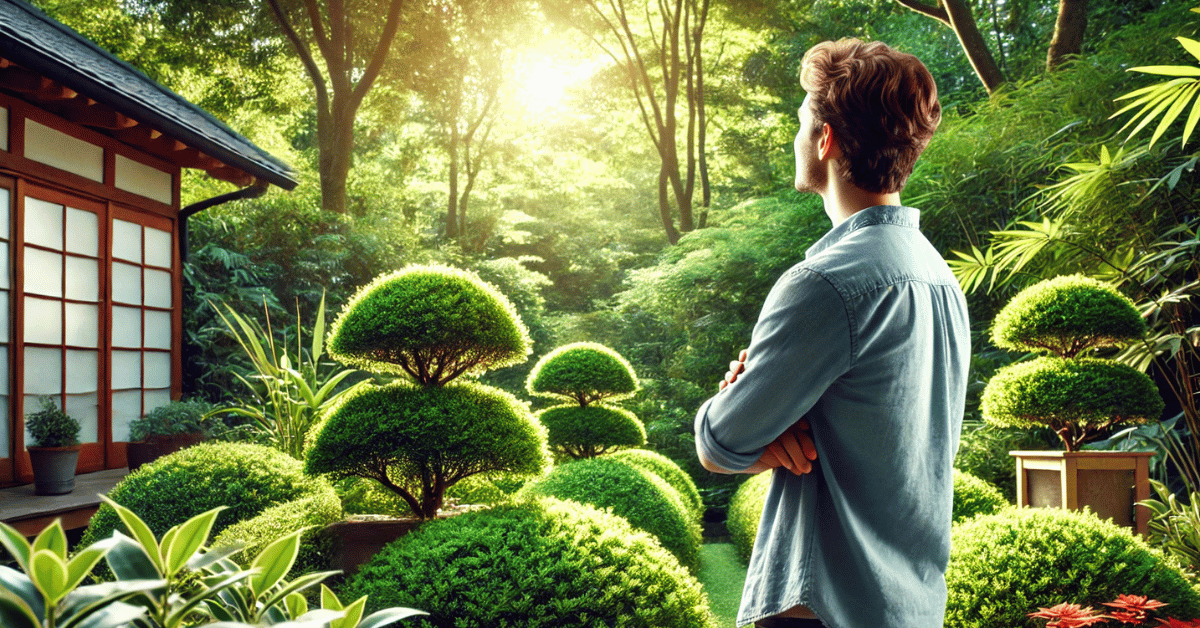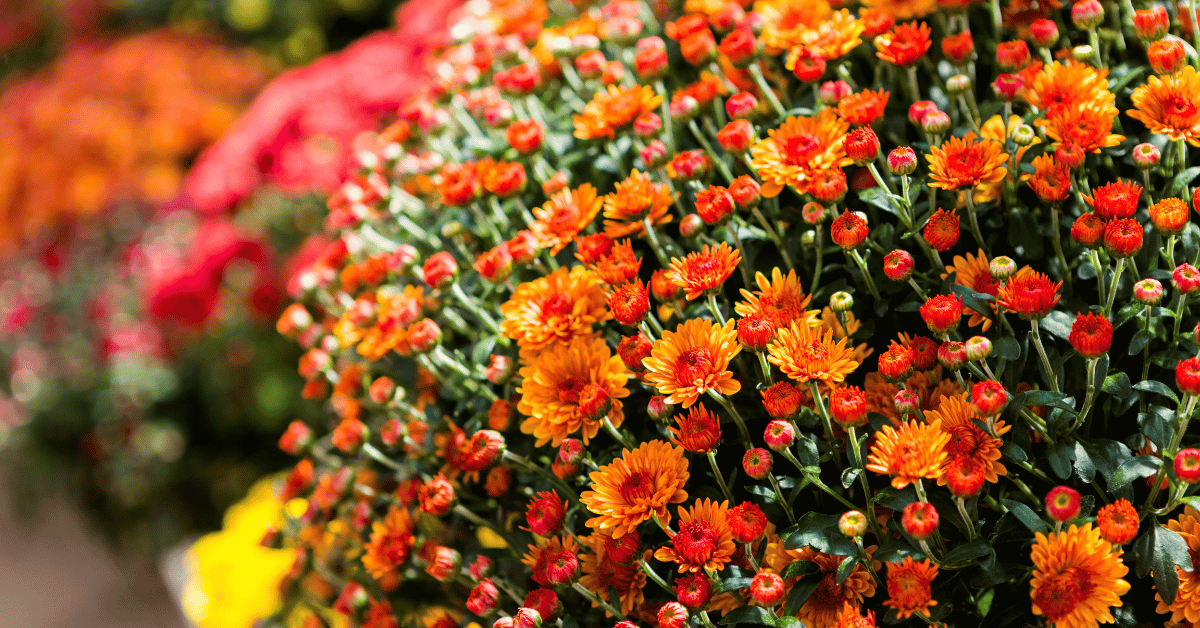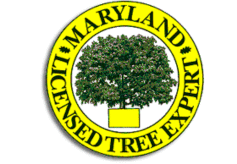Shrubs bring beauty and structure to your yard. When they start dying, it can be frustrating. But don’t worry. Many shrubs can be revived with the right care. This guide will help you understand the causes of browning and dying shrubs and provide solutions to bring them back to life.
Causes of Browning in Shrubs
Shrubs can turn brown for many reasons, often as a response to stress or damage. Identifying the underlying cause is essential for restoring their health. Below are the primary reasons shrubs may show signs of decline.
Environmental Stressors
Extreme temperatures, prolonged drought, sudden weather changes, or strong winds can put shrubs under stress. For example, excessive heat can scorch leaves, while frost or cold snaps may damage the plant's tissues. Wind can dry out leaves and break branches, particularly in exposed areas. These environmental factors can weaken shrubs, making them less resilient to other issues like pests and diseases.
Improper Watering
Watering problems are among the most common causes of browning shrubs. Overwatering creates soggy soil, which can suffocate roots and lead to root rot. Underwatering, on the other hand, deprives shrubs of the moisture they need to thrive, resulting in dry, brittle leaves and drooping branches. Striking the right balance is critical, as shrubs vary in their water requirements based on species, season, and environmental conditions.
Pests and Diseases
Insects and fungal infections can severely impact a shrub's health. Pests such as aphids, scale, or spider mites feed on the plant, leaving holes in leaves, sticky residues, or webbing. Fungal infections, often thriving in overly moist conditions, cause discoloration, wilting, or even the appearance of mushrooms near the base of the plant. Early detection of these problems is key to minimizing damage and preventing further spread.
Soil Quality Issues
Poor soil conditions, including nutrient deficiencies or inadequate drainage, can lead to browning. Shrubs depend on soil for essential nutrients like nitrogen, phosphorus, and potassium. If the soil is compacted, depleted, or has a pH imbalance, the shrub may struggle to absorb these nutrients, leading to yellowing or browning leaves. Similarly, poorly draining soil can result in waterlogged roots, further damaging the plant.
Physical Damage
Physical injuries to shrubs are another common yet overlooked cause of browning. Lawnmowers, weed trimmers, or heavy foot traffic around the plant can harm roots and branches. Pets or wildlife may also contribute to damage by chewing on leaves or digging around the base. These injuries not only cause direct harm but may also create entry points for pests and diseases.
Understanding these causes is critical to diagnosing and addressing the issue of browning shrubs effectively. By identifying the underlying stressors, you can take appropriate steps to nurse your shrubs back to health, restoring their beauty and function in your landscape.
Solutions for Reviving Shrubs
Reviving a shrub starts with proper diagnosis. Once you identify the problem, follow these steps:
- Inspect the Shrub: Look for pests, signs of disease, or damage to the branches and leaves. Use a magnifying glass if needed.
- Prune Dead Areas: Remove all dead or diseased branches. Use sharp, clean pruning tools. This helps prevent the spread of diseases.
- Adjust Watering: Water deeply but infrequently. Ensure the soil is moist but not soggy. Check the drainage around your shrubs.
- Fertilize Carefully: Add a slow-release fertilizer to replenish nutrients. Avoid over-fertilizing, as this can burn roots.
- Mulch for Protection: Add a 2-3 inch layer of mulch around the base of the shrub. Keep the mulch away from the trunk to prevent rot.
- Improve Air Circulation: Trim nearby plants to allow better airflow. This reduces the risk of fungal infections.
- Test the Soil: Check pH levels and nutrient content. Most shrubs thrive in slightly acidic to neutral soil. Adjust as needed.
Watering Issues
Watering problems are one of the most common reasons for dying shrubs. Here’s how to fix them:
- Overwatering: Too much water drowns the roots and causes root rot. Let the soil dry out between waterings. Use well-draining soil to prevent standing water.
- Underwatering: Dry soil leads to wilting and browning. Water shrubs deeply once or twice a week. Use a soaker hose to ensure the water reaches the roots.
- Seasonal Adjustments: Shrubs need less water in cooler months. Adjust your watering schedule based on the season.
Pest and Disease Problems
Pests and diseases can severely impact the health of shrubs, often leading to browning, defoliation, and eventual decline if untreated. Common pests like bagworms, scale insects, spider mites, and spotted lanternflies damage shrubs by feeding on leaves or sap, disrupting essential nutrient flow. These pests, especially those with piercing mouthparts, can cause visible symptoms such as sticky sap deposits, webbing, and abnormal leaf drop. In some cases, ant infestations are attracted to the sap excreted by pests, further stressing the plant. Fungal and bacterial diseases may also infect shrubs, leading to discoloration, spots, and weakened structure. Early detection and targeted treatments, such as removing infestations, applying insecticidal sprays, or using fungicides, are critical to halting damage and reviving shrub health.
- Pests: Use insecticidal soap or neem oil to control pests. For severe infestations, contact a professional.
- Diseases: Fungal infections, like leaf spot or rust, often cause browning. Remove infected parts and apply fungicides as needed. Ensure good airflow around the shrub.
- Regular Monitoring: Inspect shrubs weekly for early signs of pests or diseases. Early treatment is key to saving your plants.
Environmental Conditions
The environment plays a big role in shrub health. Here’s how to address common environmental problems:
- Soil Quality: Poor soil can lead to nutrient deficiencies. Add compost or organic matter to enrich the soil. Test for pH and nutrients.
- Sunlight Exposure: Some shrubs need full sun, while others prefer shade. Ensure your shrubs are in the right location for their needs.
- Temperature Fluctuations: Protect shrubs from extreme heat or cold. Use burlap covers in winter and shade cloth in summer.
- Wind Damage: Strong winds can break branches and dry out shrubs. Plant windbreaks or barriers to protect them.
Seeking Professional Help
Sometimes, shrubs require more expertise than you can provide. When problems persist despite your best efforts, turning to professional services can make a significant difference. Professionals bring specialized knowledge, tools, and techniques to diagnose and treat issues effectively. Here’s how professional help can benefit your shrubs.
Plant Health Care Programs
A plant health care program is a comprehensive approach to maintaining and restoring shrub vitality. Certified arborists design these programs based on your shrubs’ specific needs, environmental factors, and soil conditions. Regular monitoring, combined with tailored care, ensures shrubs receive the attention they need to thrive.
Accurate Diagnosis
Professional arborists possess advanced diagnostic skills to pinpoint the underlying causes of shrub decline. They use their expertise to identify issues such as root diseases, pest infestations, or soil deficiencies that may not be immediately visible. Early diagnosis allows for timely intervention, increasing the chances of saving your shrubs.
Customized Treatment Plans
Every shrub problem is unique, and a one-size-fits-all solution rarely works. Arborists create customized treatment plans based on their findings during consultations and property inspections. These plans often include soil amendments to address nutrient imbalances, pest control measures, or targeted applications of fungicides to combat diseases. Tailored treatments ensure the health and longevity of your shrubs.
Preventive Measures
Prevention is often the best cure. Professional plant health care services focus on implementing preventive measures to protect shrubs from future problems. This includes applying mulch to maintain soil moisture, pruning to promote airflow and prevent fungal growth, and providing seasonal care to prepare shrubs for temperature changes. Regular care minimizes the likelihood of recurring issues.
Property Inspections
A professional inspection of your property is a critical first step in addressing shrub problems. During these inspections, arborists evaluate not just the shrubs but also surrounding factors such as soil quality, drainage, sunlight exposure, and neighboring plant health. This holistic approach ensures that all contributing factors are considered and addressed.
The Role of an Arborist
An arborist is a tree care professional with expertise in diagnosing, treating, and preventing plant health issues. Their specialized knowledge and hands-on experience make them invaluable when dealing with stubborn shrub problems. They use advanced tools and techniques to deliver effective care while ensuring minimal disruption to your landscape.
Consultations for Shrub Health
Consultations with a certified arborist provide valuable insights into the specific needs of your shrubs. These sessions often include detailed discussions about potential issues, recommendations for care, and steps for long-term health management. An arborist’s advice can empower you to take informed actions.
Early Diagnostic Skills
Early detection of problems is crucial for reviving dying shrubs. Arborists are trained to spot subtle signs of stress, such as discoloration, unusual growth patterns, or pest activity. By addressing these issues at the earliest stages, they can prevent further damage and improve the odds of recovery.
Comprehensive Care
A professional plant health care service provides ongoing support for your shrubs. From pruning and mulching to seasonal treatments and emergency interventions, these services cover all aspects of shrub care. This ensures your plants receive the consistent attention they need to stay healthy and vibrant.
When you’re unsure about the health of your shrubs, professional help is the safest and most effective option. Certified arborists, like those at Strobert Tree Services, bring the expertise and tools necessary to diagnose and treat even the most complex issues. Whether you need a consultation, diagnosis, or ongoing care, partnering with a tree care professional is a wise investment in the health of your landscape.
Contact Strobert Tree Services
At Strobert Tree Services, we specialize in plant health care. Our certified arborists can diagnose and treat your dying shrubs. We offer pruning, removal, and customized care plans to meet your needs.
Call us today for a free health assessment. Together, we’ll bring your shrubs back to life!
By following these steps, you can revive your shrubs and enjoy a healthy, vibrant landscape. Remember, early action is key to saving dying plants. With proper care, your shrubs can thrive again.


